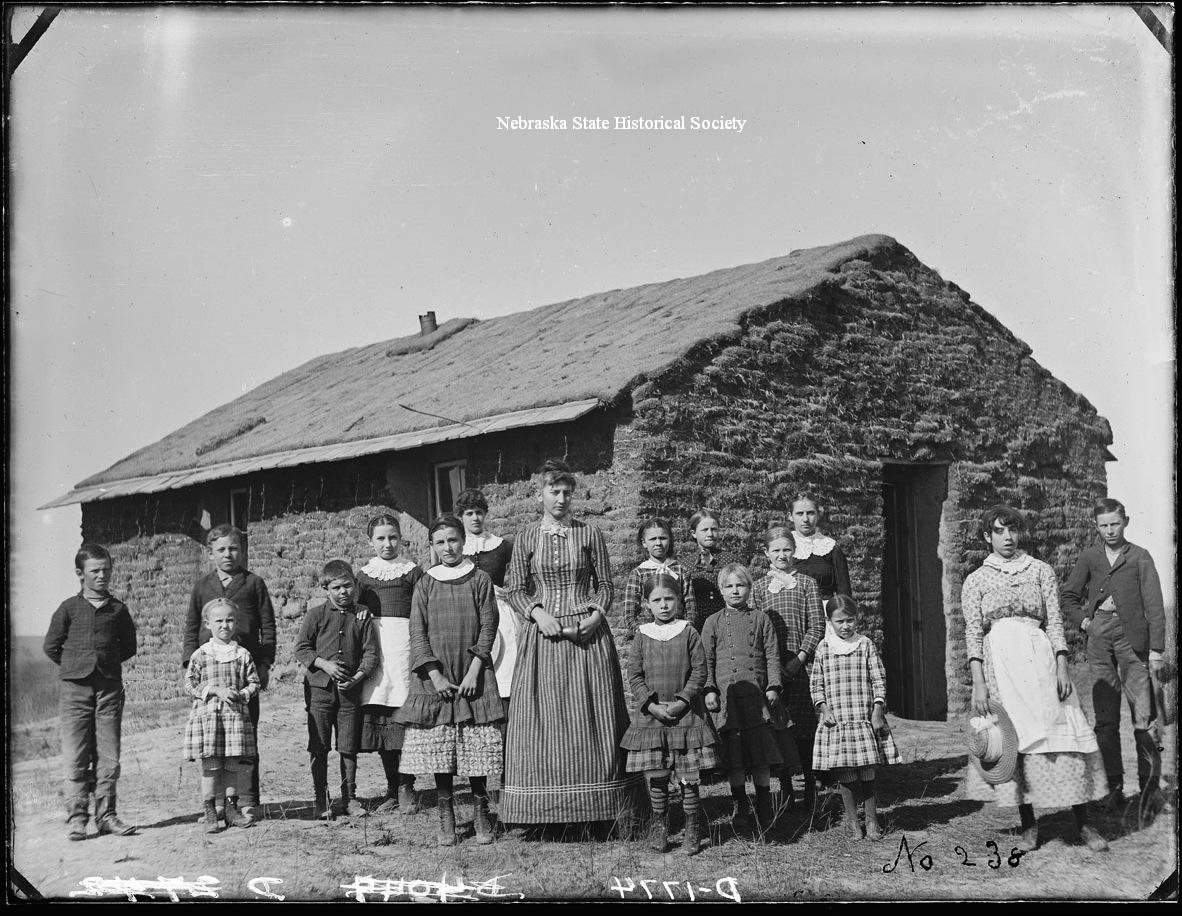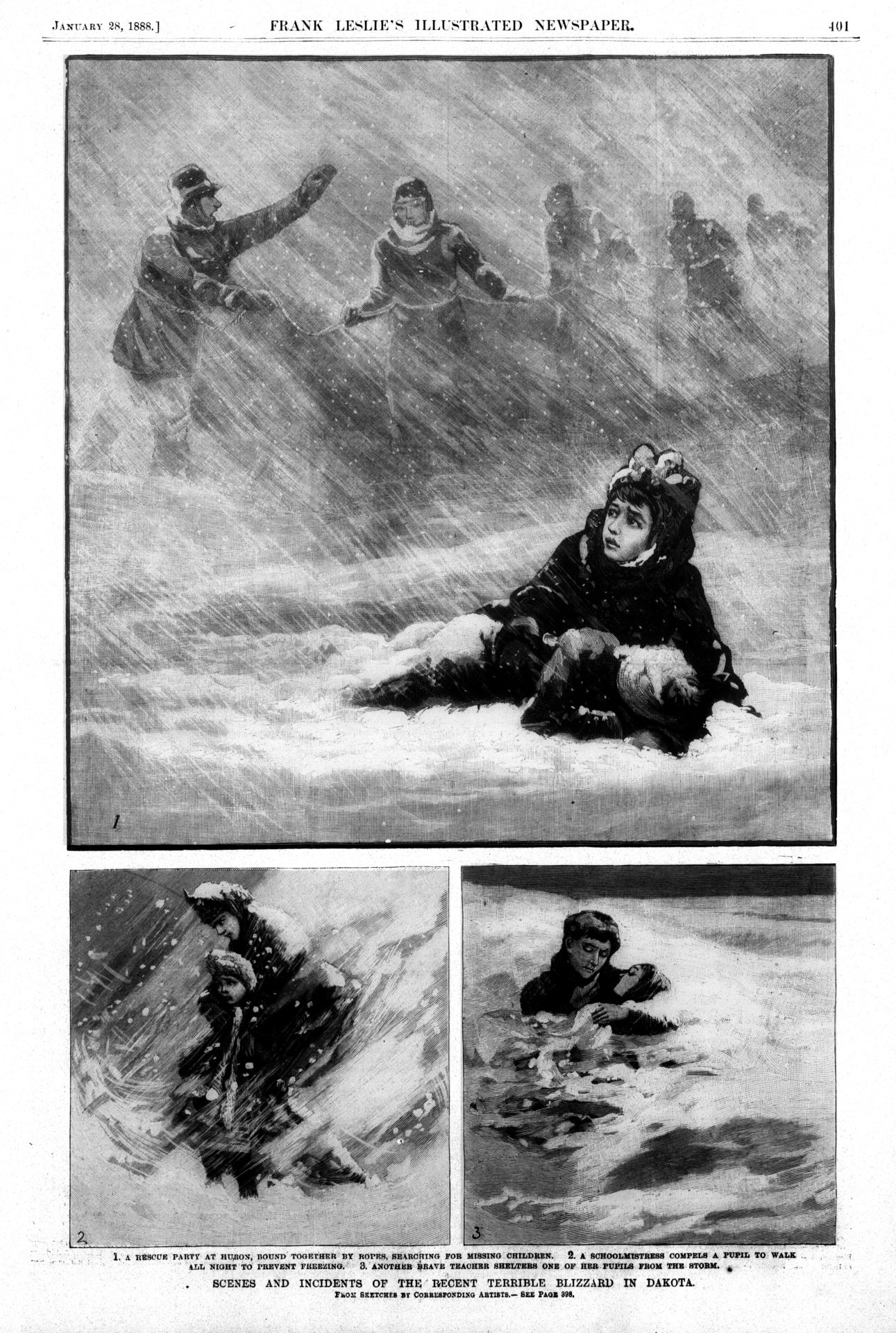


Residents of the Northern Plains of the United States are no strangers to blizzards. In fact, these whiteout snowstorms, with winds greater than 35 mph, occur so frequently, that the Dakotas, Minnesota, into Nebraska, and Iowa have been called “Blizzard Alley.” However, before today’s modern technology advanced the science of Meteorology to the state-of-the-art of today; blizzards on The Plains often came without warning and were capable of killing hundreds. One of the worst such blizzards in American history was the Schoolchildren’s/Schoolhouse/Children’s Blizzard of January 12, 1888.

Number of Blizzards by County (1959-2000) - Source: Schwartz, R. M., and T. W. Schmidlin, 2002: Climatology of
blizzards in the conterminous United States, 1959-2000.
There had been other debilitating blizzards in the Northern Plains prior to the one in 1888. The mild winter of 1872-1873 had been capped off by a particularly severe blizzard late in the season, on Easter Sunday of 1873. The “Snow Winter” of 1880-1881 (made famous by Laura Ingalls Wilder in The Long Winter) saw a series of blizzards drop snowfall so deep that train service was suspended in many areas until the spring thaw. However, the Schoolchildren’s Blizzard still tops most others in the historical record in its sudden ferocity, rapid temperature drop, and unfortunate timing, all contributing to a loss of life estimated at between 250 – 500.

Sod Schoolhouse, Custer Co., NE circa 1889 - Source: Nebraska State Historical Society
The morning of January 12 started out relatively mild across much of the eastern Dakotas, Minnesota, Nebraska, and Iowa. Conditions were mild enough that some schoolchildren left home to attend their one-room schoolhouses (some made only of prairie sod) without hats or mittens. During the course of the school day, though, a fast-moving Arctic cold front swept across the Dakotas reaching western Minnesota and eastern Nebraska, tragically, near school dismissal time.

Surface Pressure Map and Arrival Time of the Arctic Cold Front - Source: Laskin, David, 2004: The Children's Blizzard
Temperatures dropped from above freezing to -20 to -40°F in a matter of hours. Winds gusted to 60 mph, and visibilities were so low, due to the blowing snow being as “fine as sifted flour” that being out in the storm “one could not see one’s hand in front of one’s face.” Many schoolteachers, upon seeing the terrible conditions at dismissal time, opted to keep students at the schoolhouses, instead of sending them out into the dangerous conditions. However, there were also many cases where the blizzard hit just after the students had already left for home, or the modest schoolhouses were not equipped fuel-wise to keep warm enough for an overnight shelter. Thus, many schoolchildren and others ventured out into the storm; many unfortunately succumbing to the elements.

Illustrated Scenes From the Dakota Blizzard of Jan. 12, 1888 - Source: Frank Leslie's Weekly, January 28, 1888
One famous story concerned the 19-year-old schoolteacher, Minnie Freeman, who reportedly led her schoolchildren from the crumbling sod schoolhouse to her boarding house, a quarter of a mile away. According to some accounts, she tied the children together to keep them from wandering off and becoming lost in the storm. She and all her pupils made it to safety. There are many accounts of people caught out in the storm, where the only shelter they could find was to burrow themselves into a hay bale to get out of the frigid wind.
Blizzards are frequent occurrences in the Northern Plains, even in today’s technological era of computer weather modeling and instant Internet forecasts and warnings. Thankfully, the magnitude of the loss of life experienced in the Schoolchildren’s Blizzard of 1888 will probably never be experienced again in this country. Not forgetting these vivid historical accounts of severe winter weather in “days gone by” is the perfect antidote to a complacent attitude about being prepared for the worst winter can throw at you.